A Hot Bike From The Heyday Of A Motorcycling Giant
I’ve long harbored a fascination and great affection for the classic British motorbike brands. I grew up on and around my father’s Triumphs, and have owned a series of them myself over the years. Yet the Grand Marshal of the Brit parade to me was always the BSAs. With their polished tank medallions, exquisite paint schemes, compelling names (Gold Star, Rocket, Lightning, Spitfire, Bantam, etc.) and racing pedigree, the BSA brand for years has been, as fellow writer Ted Edwards might quip, my “unicorn.” I’ve longed for and lusted after them, but have never owned one. Yet.
This prime example of BSA prowess resides at the Throttlestop Museum in Elkhart Lake, Wisconsin, just up the road (literally) from the famed Road America racetrack. Birthed in the last shining years of the legendary brand, the Spitfire Special MKIII showcased the best of BSA engineering of the time. By the 1950s, BSA (Birmingham Small Arms Company LTD) was an absolute industrial giant in the British Isles, across Europe, in North America and indeed the world. For decades, BSA not only manufactured firearms and weapons for two world wars, but had come to produce transport buses, industrial powerplants, heavy construction equipment, even machine tools, to name a few.
The BSA juggernaut eventually acquired and owned several of their motorcycle competitors- Triumph, Ariel, Sunbeam, and New Hudson. In the BSA universe of those years, some of the most famed motorcycles of all time were built and sold the world over. Birmingham Small Arms was on top of the world, dominating motorcycle sales across the globe.
Their domination would not last. Across the 1950s and into the 60s, BSA execs made a series of missteps that would eventually doom their motorcycle division, and eventually the entire enterprise. Failure to advance in technology, to develop new cutting edge models, increased fierce competition from a post-war Japanese motorcycle industry resurgent and the rise of Euro brands like Jawa/CZ, Bultaco and Husqvarna, would eventually seal the fate of the motorbike and industrial behemoth.
But not without a fight. Still cranking out breathtaking motorcycles of exquisite craftsmanship, BSA turned heads with their Rocket 3 models, the now sought-after BSA/Triumph X75 Hurricane, and the Spitfire Special. The tech may have been significantly lagging behind the Japanese Big Four, but the attractiveness of these machines was undeniable.
In 1967 BSA produced the Spitfire Special MKIII, a street-legal version of the BSA Hornet, an open exhaust, no headlight flat track slider. The company swapped out the ’66 version’s GP carburetors and constant velocity stacks for a pair of Amal Concentric 932s with individual air cleaner pods. The Spitfire did retain the 2-gallon fiberglass tank and side covers from the Hornet, and graced the machine with a spectacular two-tone paint scheme with classy tank and side cover monikers, and twin chromed peashooter pipes. The bike was, and still is, a stunner to behold.
The BSA Spitfire Special MKIII was propelled by a 654 cc four-stroke parallel twin mill, with OHV and 360 degree crankshaft, a dry sump, 75mm x 74mm bore/stroke, and a compression ratio of 9:1. The Spitfire was a kick-start, chain drive 4-speed, housed in a tubular steel, double cradle frame. She made 53 ponies to the rear wheel, weighed in at 408 lbs, and pinned the needle at 120 mph. And she was pretty. Very pretty.
Yet the handwriting was on the wall. BSA/Triumph would eventually be sold to competitor Norton Villiers by 1972, becoming known as NVT. As 1973 drew to a close, both the Norton and BSA plants were shut down, even as Triumph stumbled on for a few more years.
With the late 2020 announcement of India powerhouse Mahindra purchasing the BSA name, and their plans to resurrect the brand in her native hills of England, hope abounds. For now, check out this beautiful example of BSA craftsmanship at its best, at its peak, in the Spitfire Special MKIII. Throttlestop has this as well as hundreds of other phenomenal motorcycles and legendary sports cars at their Elkhart lake showroom/museum.
Click below for their current status on opening, protocols, or take a virtual tour. Type your email where requested, and they will immediately send a code to enter the virtual museum. It is worth the visit, whether in person sometime this year, or online right here:
*All photos courtesy of Throttlestop










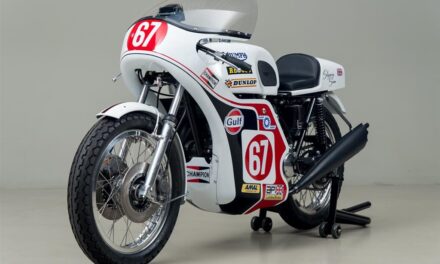











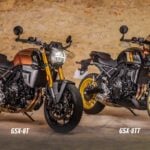
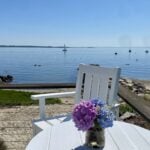
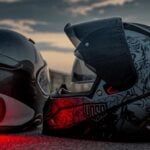
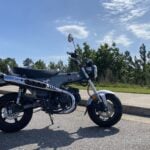


Greetings. Class is still class, no matter the time or season. The simple
unobtrusive design that just beckons “Let’s Roll!”
Class is class. Class never goes out of style.
Agreed. The Spitfire Special is timeless class.
I share your love of 50s-70s Britbikes, my particular affliction being the black-and-gold Nortons. That said “breathtaking motorcycles of exquisite craftsmanship” may be a bit florid. I remember owners making fun of a fellow rider in the 60s for thinking he could just buy a bike and, you know, ride it, without tearing it down and honing the cylinder walls first.
“florid”- maybe a bit. They were never as good as we remember, I suppose. But true, the romance remains.
Hi there, simply delighted to know the developments. Myself is a proud owner of DB32 GS., so also a domi, and a restorer of British marques. Regards.